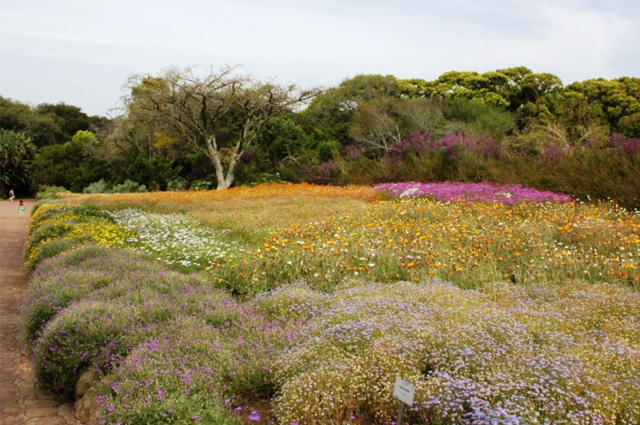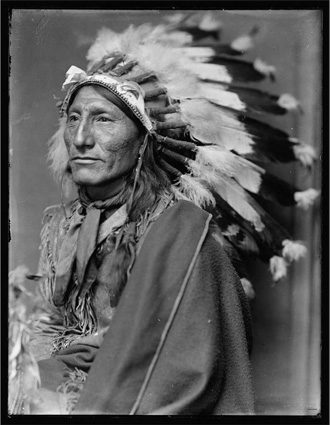This word confusion Indian vs indigenous vs Native American is more of a politically correct one — and much more respectful!
It’s all Columbus’ fault that we initially referred to Native Americans as Indians, since he thought he’d found a quicker way to India. And it gets darned confusing when I hear Indian, as I’m not sure if they’re India Indians or American Indians.
In general, indigenous is lowercase and refers to flora and fauna that are original and natural to a place. When referring to people, it should be capitalized as Indigenous.
Native American is a more explicit term that refers to the Indigenous people of North America. There was a note that Indigenous is preferred to Native American as it does not imply that America was here before the Native Americans. Even better would be referring to the specific tribal name or regional designation. And, of course, it’s a term that does not refer to the indigenous people of Canada AND Alaska (a better term is Alaska Native (or Native Alaskan).
That said, Native American is mostly used in formal writing. If you’re writing an historical novel, do not adopt the politically correct terms of our time.
Exploring Later . . .
Yes, your choice of word can indicate “Bigotry vs Prejudice vs Racism“. Considering historical prejudices, it may be necessary to understand the differences between “Hanged versus Hung“. If describing a particular tribe or people, do get it right about if you are writing about the Plains Indians, consider reading “Plain versus Plane“. Then again, if you’re writing an historical novel, you probably should use dialect, although it would be ideal if you could, again, refer to the actual tribe.
If writing about riding, remember that a horse can whicker. You’ll want to know about their tack, such as bridles and a corral where horses are sometimes kept. When riding, a character may knee their horse, attempt to stop with a whoa, or the tack may jingle. And there is a difference between “filly and Philly“.
When following a trail, a man or horse may carry a load and lope or hurtle past (or hurdle over) boulders.
Cultural practices may include a rite or counting coup. It is necessary to be aware whether a “Nod versus Shake” will make a difference, and a character may need to be wary lest a stare could mean something.
Ware the border rife that will arise and a martial cavalry (likely to be based in a fort where they need to repel attackers) or a marshal will step forth. With rifles. One side or the other could “Hold versus Holed” up. Warriors will definitely be involved with a whoop. And eventually both sides may make a pact.
Of course one might transgress and get beat, tied up, or trussed up. Note that a battle or fight usually results in bruises (although a tussle usually doesn’t), which can be, groan, a pain. It might even result in a vein being cut by the knave.
In camp, a character may need to hew wood or knap weapons. For food a character may need to track a deer or other animal by its pellets. Be sure to stay downwind. Necessities may include maize, a cord, the wear or use of “Close vs Clothes vs Cloths“, which may be worn, using a sheath to sheathe a knife, wear a mantle.
I warn you, if some character wants “Avenge vs Revenge vs Vengeance“, those feelings can “Infect versus Infest“.
Ahh, for those days of yore.
Word Confusions . . .
. . . started as my way of dealing with a professional frustration with properly spelled words that were out of context in manuscripts I was editing as well as books I was reviewing. It evolved into a sharing of information with y’all. I’m hoping you’ll share with us words that have been a bête noire for you from either end.
If you found this post on “Indian vs indigenous vs Native American” interesting, consider subscribing to KD Did It, if you’d like to track this post for future updates.
| Indian | indigenous | Native American |
|---|---|---|
 |
 |
 — |
| Part of Grammar: | ||
| Adjective; Noun
Plural for the noun: Indians |
Adjective | Adjective; Noun
Plural for the noun: Native Americans |
| Adjective: [Peoples] Relating to India or its people, customs, or languages [Peoples] Relating to or denoting Indigenous peoples of North, Central, and South America, especially those of North America, except the Eskimos, Aleuts, and Inuits Oriental [Geography] Belonging or pertaining to a phytogeographical division comprising India S of the Himalayas, and Pakistan and Sri Lanka. Noun: [Old-fashioned; taboo] A member of any of the Indigenous peoples of North, Central, and South America, especially those of North America |
Adjective: Originating or occurring naturally in a particular place
|
Adjective: Relating to a member of any of the indigenous peoples of North, Central, and South America, especially those living in what is now the continental US Noun: |
| Examples: | ||
| Adjective: The company is said to enter the Indian market soon. The map shows an Indian settlement southwest of Swan Lake. The publication of that book gave her career an Indian summer. Noun: Before contact with the Europeans, about 60,000 Indians lived in the area. “There were heaps of earth also, which, being dug open, proved to be Indian graves, containing bows and flint-headed spears and arrows; for the Indians buried the dead warrior’s weapons along with him” (Hawthorne, ch 7). |
Adjective: Coriander is indigenous to southern Europe. The arches and use of tile is the indigenous style of architecture. She wants the territorial government to speak with Indigenous people before implementing a program. The project will bring high-speed internet access to remote Indigenous communities. We are marching for indigenous rights. In many communities, Columbus Day has become Indigenous People’s Day. |
Adjective: “Many Native American words such as chia, chili, chocolate, coyote, guacamole, mesquite, peyote, shack, tamale, tomato, abalone, bayou, cannibal, Chinook, manatee, poncho, and potato have entered the English language” (Interesting). “Census Bureau, the largest tribal groups in the nation include the Cherokee, Navajo, Chippewa, Choctaw and Sioux and a total of 566 Native American tribes are federally recognized” (Interesting). Noun: The Navajo Nation made up the largest share of Native Americans. Native Americans are saving lake sturgeon. Sacagawea was a Lemhi Shoshone woman, a Native American, who, in her teens, helped the Lewis and Clark Expedition in achieving their chartered mission objectives by exploring the Louisiana Territory” (Sacagawea). |
| Derivatives: | ||
| Adjective: Indianized Noun: Indianisation [British], Indianism, Indianization [US], Indianness Verb: Indianise [British], Indianize [US] |
Adverb: indigenously Noun: indigene, indigenousness |
|
| History of the Word: | ||
| The Old English adjective was Indisc.
Middle English, circa 1300, from the Late Latin indianus from India inhabit of India or South Asia; pertaining to India as noun and adjective. The more common Middle English form was Ynde or Inde, from the Old French (hence Indies). Modern English, from at least 1553, as applied to the aboriginal native inhabitants of the Americas as a noun and the 1610s as an adjective, reflecting Spanish and Portuguese use, on the mistaken notion that America was the eastern end of Asia. The more common term, Indish, was also in the 16th century. In the 18th and 19th centuries, Indian was occasionally used to refer to the inhabitants of the Philippines and indigenous peoples of Australia and New Zealand. In 1831, Red Indian came to distinguish the native Americans from inhabitants of India, but was not commonly used in North America. From 1947 Indian was in reference to the Republic of India while American Indian was in reference to American Indians. |
Mid-17th century from the Latin indigena meaning a native + -ous. | In the 1960s, Native American replaced American Indian as the proper and more respectful way to refer to the indigenous people of the Americas. |
C’mon, get it out of your system, bitch, whine, moan . . . which words are your pet peeves? Also, please note that I try to be as accurate as I can, but mistakes happen or I miss something. Email me if you find errors, so I can fix them . . . and we’ll all benefit!
Satisfy your curiosity about other Word Confusions on its homepage or more generally explore the index of self-editing posts. You may also want to explore Book Layout & Formatting Ideas, Formatting Tips, Grammar Explanations, Linguistics, Marketing Help & Resources, Publishing Tips, the Properly PunctuatedProperly Punctuated, Writing Ideas and Resources, and Building Your Website.
Resources for Indian vs indigenous vs Native American
Some of these links may be affiliate links, and I will earn a small percentage, if you should buy it. It does not affect the price you pay.
Apple Dictionary.com
The Free Dictionary: Indian, indigenous,
Hawthorne, Nathaniel. Grandfather’s Chair. Originally published 1840. July 2022. Print.
“Interesting Facts About Native Americans.” Fact Retriever. International Business Times. US ed. 28 Sept 2018. Accessed 18 Nov 2024. <https://www.factretriever.com/native-american-facts>. Article.
“Sacagawea.” Wikipedia. 30 Sept 2024. Accessed 18 Nov 2024. <https://en.wikipedia.org/wiki/Sacagawea>. Article.
Pinterest Photo Credits
Native Americans on Horseback is in the public domain, via PickPik.


